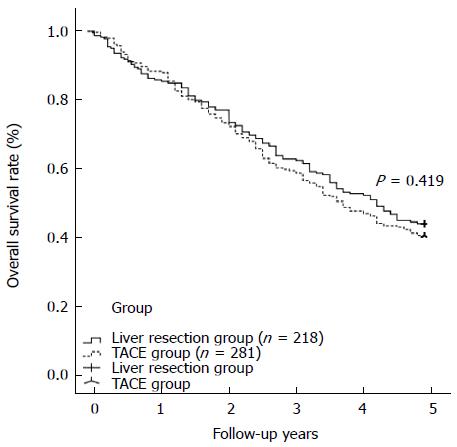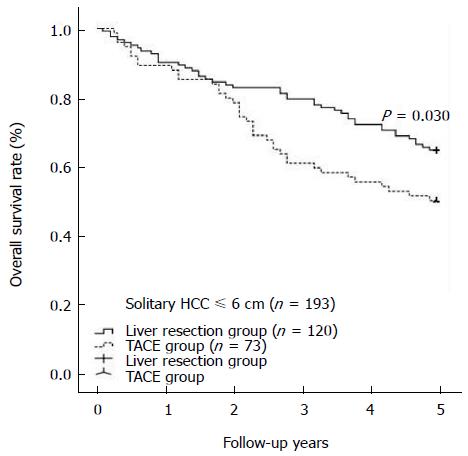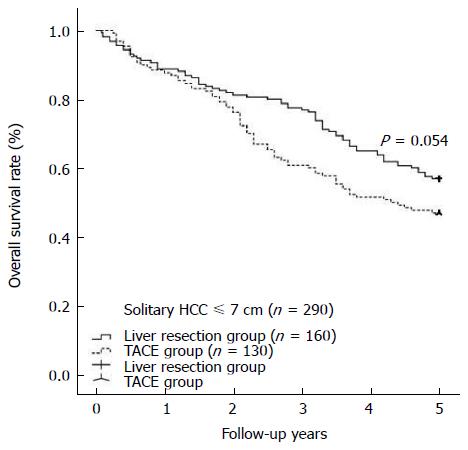Copyright
©The Author(s) 2015.
World J Gastroenterol. Apr 21, 2015; 21(15): 4635-4643
Published online Apr 21, 2015. doi: 10.3748/wjg.v21.i15.4635
Published online Apr 21, 2015. doi: 10.3748/wjg.v21.i15.4635
Figure 1 One-, 3-, and 5-year overall survival of patients in the liver resection group was 86.
2%, 62.8%, and 44.0%, respectively, and 88.3%, 59.8%, and 40.6%, respectively, for patients in the transarterial chemoembolization group. The long-term outcomes of the two groups were similar. TACE: Transarterial chemoembolization.
Figure 2 Long-term overall survival in the liver resection group was significantly better than that in the transarterial chemoembolization group for solitary hepatocellular carcinomas with a diameter of no more than 6 cm.
The survival benefit in the liver resection group increased further after 3 years. HCC: Hepatocellular carcinoma; TACE: Transarterial chemoembolization.
Figure 3 Survival benefit that was observed in the liver resection group was no longer present when the diameter of the solitary hepatocellular carcinoma was less than or equal to 7 cm.
HCC: Hepatocellular carcinoma; TACE: Transarterial chemoembolization.
Figure 4 Liver resection group.
A: Liver resection group did not show any survival benefit when the diameter of the solitary hepatocellular carcinoma was less than or equal to 8 cm; B: Liver resection group did not show any advantage with respect to long-term survival when the diameter of the solitary hepatocellular carcinomas was greater than 6 cm. HCC: Hepatocellular carcinoma; TACE: Transarterial chemoembolization.
- Citation: Zhang DZ, Wei XD, Wang XP. Comparison of hepatic resection and transarterial chemoembolization for solitary hepatocellular carcinoma. World J Gastroenterol 2015; 21(15): 4635-4643
- URL: https://www.wjgnet.com/1007-9327/full/v21/i15/4635.htm
- DOI: https://dx.doi.org/10.3748/wjg.v21.i15.4635












